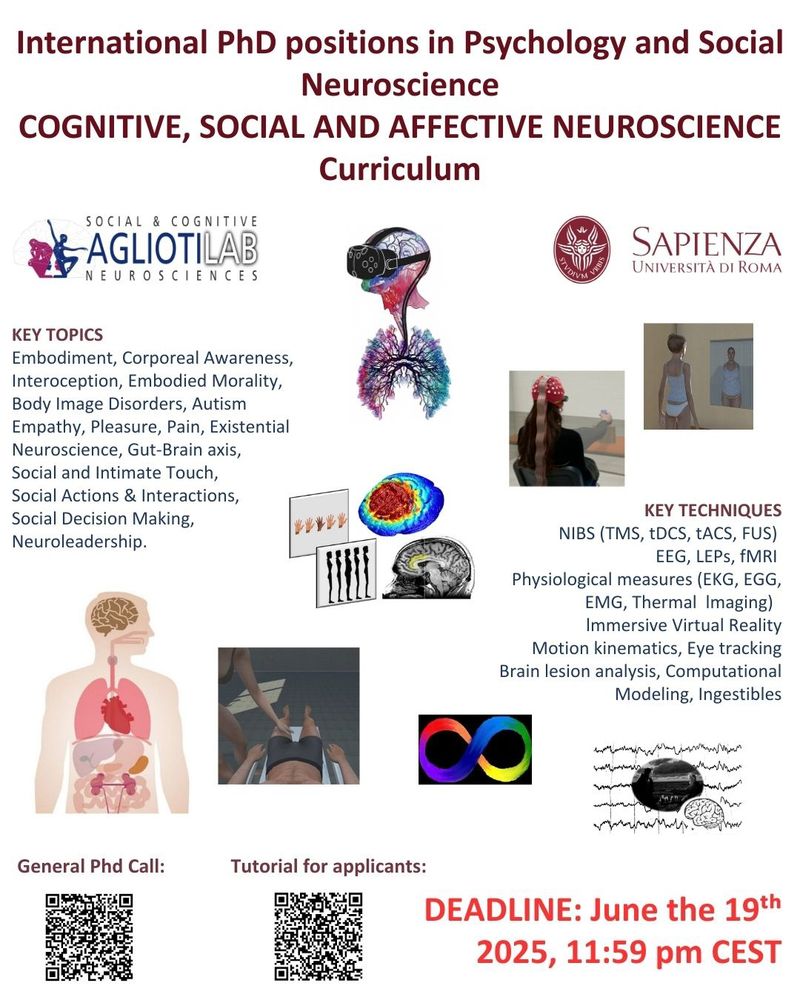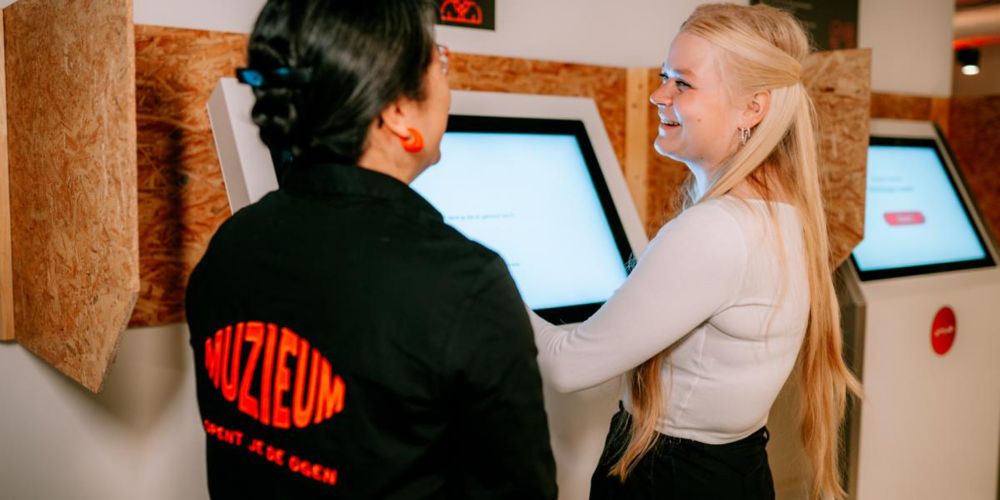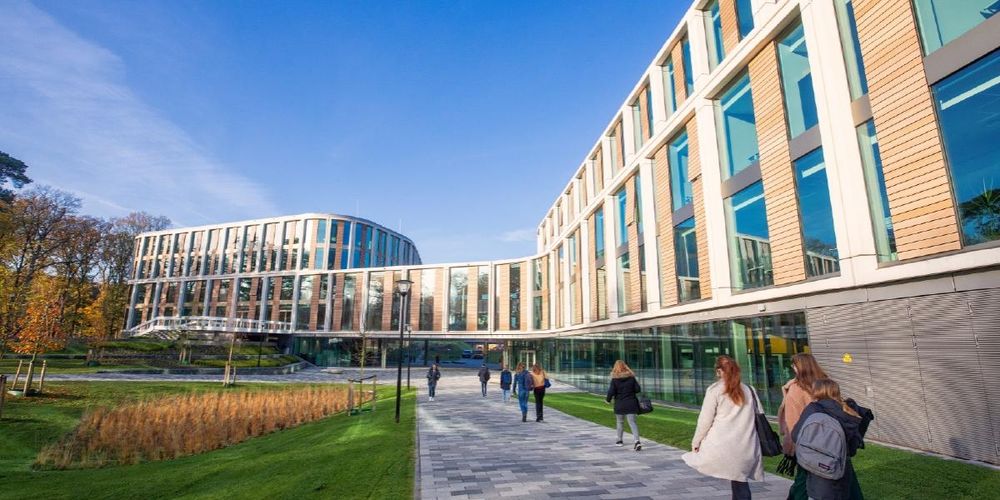👀 Interacting or non-interacting: that is the research question...
📢 New pre-print out on social interaction perception in preverbal infants: osf.io/preprints/ps.... In collaboration with @Emilie Serraille, @jrhochmann.bsky.social and @ljubapi.bsky.social.
🧵 An animated thread 👇
#neuroskyence
24.09.2025 07:05 — 👍 2 🔁 1 💬 1 📌 0

PhD Position: Theory of Learning in Artificial and Biologically Inspired Neural Networks | Radboud University
Do you want to work as a PhD candidate Theory of Learning in Artificial and Biologically Inspired Neural Network? Check our vacancy!
Please RT - Open PhD position in my group at the Donders Center for Neuroscience, Radboud University.
We're looking for a PhD candidate interested in developing theories of learning in neural networks.
Applications are open until October 20th.
For more info: www.ru.nl/en/working-a...
22.09.2025 17:17 — 👍 14 🔁 13 💬 2 📌 1

🚨WHOHOO!! I am happy to share that I received the #ERCStG for my project PRECHRON: The Prefrontal Chronometer for Organizing Working Memory.
I am going to study #neuraloscillations during #workingmemory at the @rug.nl @rug-gmw.bsky.social
#brainstimulation #TMS #EEG
04.09.2025 11:54 — 👍 31 🔁 9 💬 5 📌 1
The TMS-RAT v1.0 is now being tested!
It's a checklist / guidance tool to help researchers report #TMS studies & to facilitate quantitative comparisons in #systematicreviews & #meta-analyses
All the data will be made freely available; an interactive website will be coming. Stay tuned!
tms-rat.org
03.06.2025 18:35 — 👍 3 🔁 3 💬 0 📌 3

PhD Call 📢📢📢
Are you interested in a PhD in Cognitive and Social Neuroscience? Join us! We are booking for highly motivated and inspired future researchers! Waiting for you in Rome!
🗓️ Deadline 19th June
Useful links👇🏻👇🏻👇🏻
phd.uniroma1.it/web/concorso...
phd.uniroma1.it/web/pagina.a...
22.05.2025 15:25 — 👍 10 🔁 9 💬 0 📌 2

Visitors muZIEum contribute to science | Radboud University
A study by Marco Gandolfo shows how our brain processes information and how this differs by gender and age. 14 thousand participants in this study were visitors to the muZIEum in Nijmegen who took par...
👁️💡 How much do we really see?
@marco-gandolfo.bsky.social reveals how our brains process the unexpected, with surprising differences across age and gender.
With over 14,000 participants at muZIEum, it’s the largest public #inattentional #blindness experiment to date.
🔗 www.ru.nl/en/donders-i...
13.05.2025 07:18 — 👍 19 🔁 7 💬 0 📌 0
OSF
New preprint out!
“Separate Neural Representations for Physical and Communicative Social Interactions: Evidence from Data-driven Voxel Decomposition” w/ @emaliemcmahon.bsky.social @lisik.bsky.social
osf.io/preprints/ps...
14.05.2025 19:38 — 👍 11 🔁 3 💬 0 📌 1
Programming for Psychology and Neuroscience – PPN
A collection of modules, datasets, and other resources for learning to program in R, geared toward students in psychology and neuroscience: ritcheym.github.io/ppn/
25.04.2025 13:10 — 👍 21 🔁 14 💬 0 📌 0
PhD position opening in Padova. It is a multidisciplinary project in Experimental Aesthetics and Psychology of Art.
www.bertamini.org/lab/MIRACLE....
06.04.2025 08:37 — 👍 4 🔁 6 💬 0 📌 0

Human head models and populational framework for simulating brain stimulations - Scientific Data
Scientific Data - Human head models and populational framework for simulating brain stimulations
🚨New Publication🚨 Do you work with e-field modeling in NIBS? Do you not always want to use Ernie, but you have no access to MRIs?
We share 100 fully preprocessed head models for e-field simulations based on the HCP.
Thanks! @alekseichuk.bsky.social & Taylor Berger
www.nature.com/articles/s41...
31.03.2025 05:39 — 👍 7 🔁 1 💬 0 📌 0
This work in collaboration with @Paul E. Downing and @Cosimo Urgesi has now been published published in NeuroImage 🚨
www.sciencedirect.com/science/arti...
24.03.2025 07:53 — 👍 9 🔁 3 💬 1 📌 0
Interactions revealed by Garner tasks likely emerge during the perceptual analysis of the stimuli, rather than via top-down links between the social categories. Further, our findings confirm that ccPAS is a promising protocol for investigating of bottom-up and top-down processes in visual cognition!
24.03.2025 07:53 — 👍 1 🔁 0 💬 0 📌 0

After boosting forward connectivity between V1 and the EBA the interference of sex on emotion judgments was eliminated, suggesting that attentional interferences for body judgments emerge at a forward stage of processing.
24.03.2025 07:53 — 👍 1 🔁 0 💬 1 📌 0

In a second experiment we use an offline TMS protocol (cortico-cortical paired associative stimulation) to strengthen forward or feedback connectivity between the primary visual and body-selective cortex.
24.03.2025 07:53 — 👍 2 🔁 0 💬 1 📌 0


Using the Garner selective attention paradigm we show that judgements of body fearful and happy emotion is slowed down by the task irrelevant variation of body sex.
24.03.2025 07:53 — 👍 0 🔁 0 💬 1 📌 0
This work in collaboration with @Paul E. Downing and @Cosimo Urgesi has now been published published in NeuroImage 🚨
www.sciencedirect.com/science/arti...
24.03.2025 07:53 — 👍 9 🔁 3 💬 1 📌 0

A body detection inversion effect revealed by a large-scale inattentional blindness experiment
As a social species, humans preferentially attend to the faces and bodies of other people. Previous research revealed specialized cognitive mechanisms…
New Paper out in @Cognition with @peelen.bsky.social !🚨📣
In a large-scale (N = 13539!) inattentional blindness experiment ran on naive museum visitors we demonstrate visual sensitivity to the 🚶♀️ upright human form 🚶♂️
@dondersinst.bsky.social
Open access link
www.sciencedirect.com/science/arti...
12.03.2025 08:32 — 👍 36 🔁 16 💬 1 📌 1
In addition, with the largest inattentional blindness sample to date, we show that large-scale experiments on unsupervised participants in public spaces can help studying cognitive and perceptual phenomena - particularly with studies with few critical trials that rely on participants' naivety!🏛️
12.03.2025 08:32 — 👍 1 🔁 0 💬 1 📌 0
What does a body detection inversion effect mean?
Detection of another person is likely to occur from a distance. Bottom-up sensitivity to upright body features may provide an advantage, in evolutionary terms, for readily detecting the presence of others at a “safe” distance.
12.03.2025 08:32 — 👍 0 🔁 0 💬 1 📌 0

With this large scale diverse and naive sample we also show that, in line with previous reports, age and gender differences exist in detection rates of inattentional blindness paradigms -
The older the less you detect unexpected critical stimuli!
And people identifying as men detect it more often
12.03.2025 08:32 — 👍 0 🔁 0 💬 1 📌 0

Is the detection inversion effect dependent on the presence of the head? No! In an additional experiment we replicate this effect with headless bodies.
12.03.2025 08:32 — 👍 0 🔁 0 💬 1 📌 0

We found a detection inversion effect specific to person stimuli: Even when a person was not expected to appear at all, this was detected more often than when inverted. No detection inversion effect was found for plants, showing that for other objects detection relies on basic visual features.
12.03.2025 08:32 — 👍 0 🔁 0 💬 1 📌 0

We asked to judge the length of the line of a cross. Unbeknownst to the participants a person or a plant silhouette appeared inside the cross. Either upright or inverted. In a public space on unsupervised visitors, when fully unexpected 48% people missed the stimulus, showing inattentional blindness
12.03.2025 08:32 — 👍 0 🔁 0 💬 1 📌 0

A body detection inversion effect revealed by a large-scale inattentional blindness experiment
As a social species, humans preferentially attend to the faces and bodies of other people. Previous research revealed specialized cognitive mechanisms…
New Paper out in @Cognition with @peelen.bsky.social !🚨📣
In a large-scale (N = 13539!) inattentional blindness experiment ran on naive museum visitors we demonstrate visual sensitivity to the 🚶♀️ upright human form 🚶♂️
@dondersinst.bsky.social
Open access link
www.sciencedirect.com/science/arti...
12.03.2025 08:32 — 👍 36 🔁 16 💬 1 📌 1
🚨Job alert!🚨 Are you curious about curiosity, and looking for a post-doc position? Then please consider applying: www.ru.nl/en/working-a...
Feel free to e-mail/DM me if you have questions.
Thanks very much for sharing/re-posting!
19.03.2024 12:46 — 👍 28 🔁 36 💬 1 📌 1
Director of Language & Genetics at Max Planck Institute, Nijmegen.
Tracing the complex connections between genes, brains, speech & language.
Website: https://www.mpi.nl/people/fisher-simon-e
ORCID: https://orcid.org/0000-0002-3132-1996
Associate Professor, Department of Psychology, Harvard University. Computation, cognition, development.
PhD Student at Kaiser Lab, JLU Gießen, Germany
@dkaiserlab.bsky.social
Professor of Psychology and Vice President (Research) at Western University 🇨🇦
Professor of the Psychology of Language at University College London. Director of the Language and Cognition Lab.
CNRS scientist (neurolinguistics). LPL, ILCB & Aix-Marseille University.
ERC Consolidator Laureate (2025) for the project ‘LaDy’ (‘Language in the Dyad’)
Husband of Elin. Dad of Scott & Alessio.
#science #cycling & #wine
(personal account)
Post-doctoral Researcher @dkaiserlab.bsky.social Justus Liebig University Gießen, studying multisensory perception, using fMRI, EEG, and computational models.
associate prof of psychology at brooklyn college & cuny grad center, & assoc prof of phil at cuny grad center; interested in moral psych—how people judge what is right and wrong, and what they do with those judgments
neuroscientist in Korea (co-director of IBS-CNIR) interested in how neuroimaging (e.g. fMRI or widefield optical imaging) can facilitate closed-loop causal interventions (e.g. neurofeedback, patterned stimulations). https://tinyurl.com/hakwan
The European Society for Cognitive and Affective Neuroscience aims to promote scientific enquiry within the field of human cognitive, affective and social neuroscience, particularly with respect to collaboration and exchange of information between research
Yukiyasu Kamitani | 神谷之康 Neuroscientist and brain decoder
http://kamitani-lab.ist.i.kyoto-u.ac.jp
http://youtube.com/@ATRDNI/videos
https://twitter.com/ykamit
I do my PhD on physically based (differentiable) rendering, material appearance modeling/perception/capturing @tsawallis.bsky.social's Perception Lab
I enjoy photography, animation/VFX, working on my renderer, languages and contributing to Blender.
Associate Prof in Cognitive Neuroscience at Integrative Neuroscience and Cognition Center, Université Paris Cité & CNRS
Perception & Action Group
Researching how multisensory experience shapes perception. Social touch-Movement-Body-Self vs Other-Affect
Postdoctoral researcher at the Institut des Sciences Cognitives 'Marc Jeannerod', CNRS, Lyon.
👀 Interested in social perception in typical and atypical development
🧠 I image all kinds of brains
🤖 Trying to get into neuro computational modeling and AI
Cognitive neuroscientist currently interested in the interplay of interoception and imagery. Working hypothesis that aphantasia results from suboptimal processing of interoceptive signals in the insula
PhD candidate in CogCompNeuro at JLU Giessen
Exploring brains, minds, and worlds 🧠💭🗺️
https://levandyck.github.io/
PhD student in the Object Vision Group at CIMeC, University of Trento. Interested in neuroimaging and object perception. He/him 🏳️🌈
https://davidecortinovis-droid.github.io/
artificial intelligence and social cognition | Utrecht Young Academy | he/him
🤖🧠🤯 | Associate professor at Utrecht University
Lab website: http://human-plus.gitlab.io
Personal website: https://www.ruudhortensius.nl/
Cognitive and perceptual psychologist, industrial designer, & electrical engineer. Assistant Professor of Industrial Design at University of Illinois Urbana-Champaign. I make neurally plausible bio-inspired computational process models of visual cognition.


















